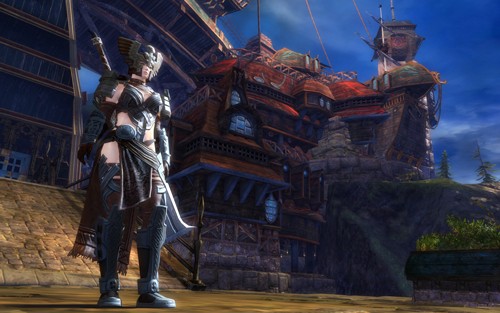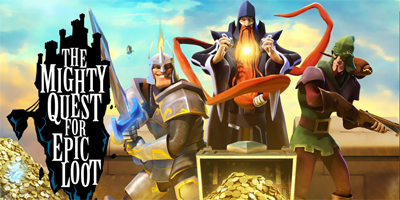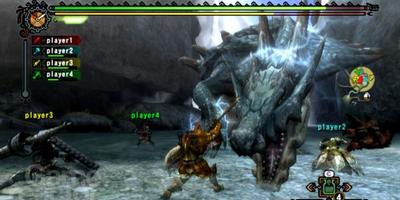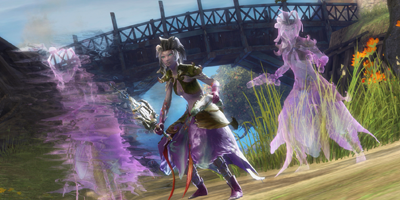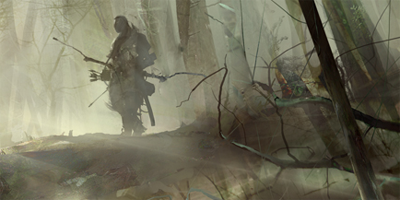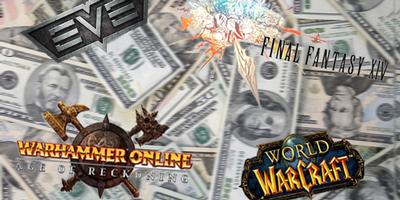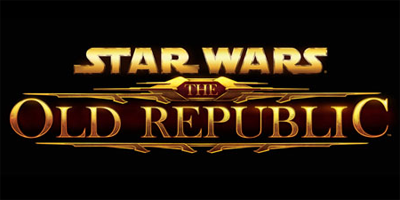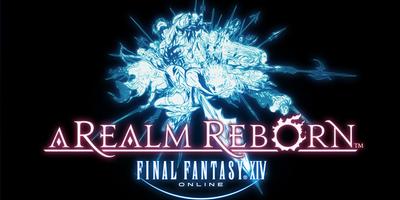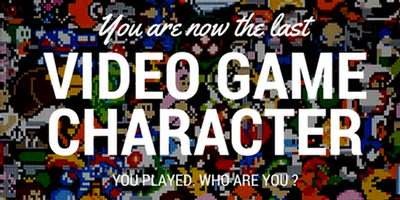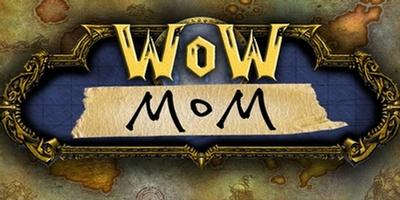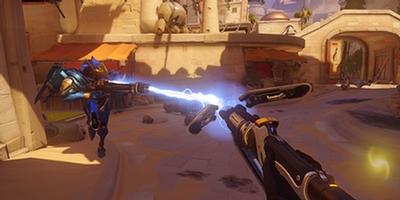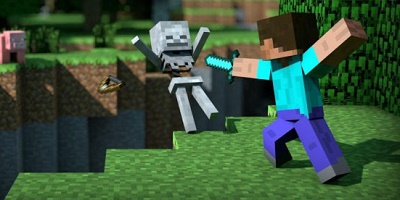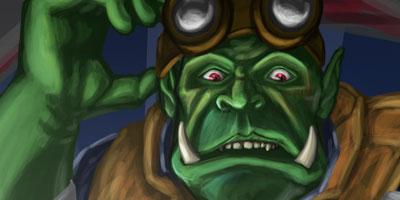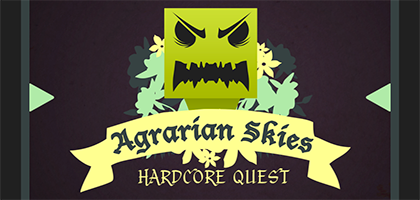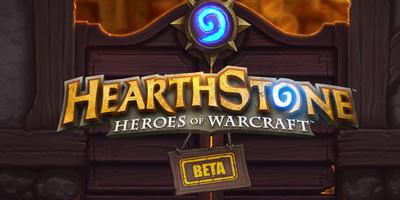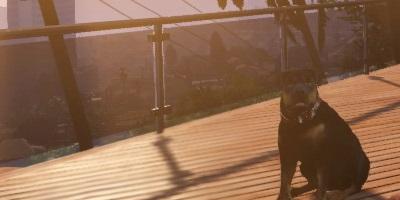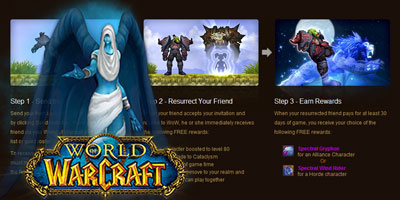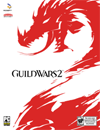
- by Amanda "Mandifesto" Orneck
- Posted on September 11, 2012 @ 11:00 PST

Guild Wars 2
Genre: MMO

The ESRB has rated this product:
Teen
Teen
08/28/2012 ( Win PC )
Desc:
Guild Wars 2 is a massively multiplayer online role-playing game by ArenaNet. Set in the fantasy world of Tyria, the game follows the re-emergence of Destiny's Edge, a disbanded guild dedicated to fighting the Elder Dragons, a Lovecraftian species that has seized control of Tyria in the time since the original Guild Wars. The game takes place in a persistent world with a story that progresses in instanced environments.
When ArenaNet first announced they were returning to Tyria with a sequel to Guild Wars, the gaming community was wary. There was so much about the limited nature of the first game that left the player unsatisfied, could they really create a sequel that would live up to the expectations of the MMO gamer in 2012? With Guild Wars 2 ArenaNet has managed not only to create a viable sequel to their original game, they have set the new standard for what an MMORPG should be in this day and age. And yet, all that glitters in Tyria is not gold.

Beauty all around you
Visually, Guild Wars 2 is nothing short of a masterpiece, especially when you consider this is an MMORPG. The art style is bold and elegant, and their use of simulated hand-painted textures and backgrounds for cut-scenes lends an extraordinary amount of drama to the gaming experience. Large swathes of painted colors transition you from the game world to the cut-scene and back again, as if to say “we aren’t creating a game, we are creating interactive art.” Additionally the zones and environments are each truly unique and created with breathtaking vistas – so much so that the developers added in a Vista mechanic that allows explorers a small glimpse at the choicest viewpoints in a particular area. There’s nothing quite like platforming up the edge of a ravine and then being treated to a sweeping panoramic of your surroundings.
Character design also follows this larger-than-life design aesthetic. From the pint-sized Asura to the mountainesque Norn, characters in Guild Wars 2 are each unique. No cookie cutter models stretched out on multiple skeletons here. This is one of the few games where taking the time to make a customized character matters, because you’ll be seeing your character’s face in every cut scene, up close and personal, talking using actual lip-syncing technology. Like the original Guild Wars, the sequel allows for the dying of clothing, and you start out by selecting a color scheme for your character’s equipment that carries over into every piece they put on. This too enhances the uniqueness of the characters, something that is highly important in an MMO setting where it’s about your personal experience in the game world.
The sweeping vistas, beautiful zone design, and innovative character creation are all enhanced by the lilting melodies that follow you throughout the game. The music and audio go a long way toward setting a mood, and the Guild Wars 2 moods are set with dramatic songs that only add to the player experience. Play long enough and you’ll recognize when conflict is going to start just by the music.
“This is my story…”
From the very first moment you create your character, you are building their story. Not only do you pick eye color and hair style, you also fill out a short questionnaire about the events in your character’s life that led up to the moment where they join the game. Perhaps your character lost their sister in the war, or grew up an orphan on the streets. Building this backstory is incredibly important, because it determines what personal questline you will be following throughout the rest of the game. Yes, you heard right – personal quests are what drive Guild Wars 2. In this way, this game is more about story than any other MMORPG to date. You will learn about your character, find out what drives them, and help mold them into the hero they were meant to be. The stories themselves are interesting, taking surprising turns you would expect from a great Fantasy novel, but if you are playing more than one character you will notice a great deal of overlap, particularly for the personal quests of characters of the same race. So while you might be blown away by the turn of events of your Asura engineer’s rise to prominence, the next time you play an Asura Elementalist you might notice a bit of overlap.
The story system is one of the strongest elements in Guild Wars 2, and definitely separates it from the rest of the MMO pack in terms of innovation in the genre. This system doesn’t lend itself to group play very well though, since it really is all about your own personal experience, although it is fun to peek into other player’s lives when you group with them. It’s almost like playing a part in a movie instead of just watching it.
A new kind of grind
Guild Wars 2 has further broken with traditional norms when it comes to quest structure. As mentioned before, the majority of your questing time takes place within the personal storyline of your character, and in between these quests you have helping node points scattered throughout the world that help you reach the level required to continue your personal quest. Initially this change from traditional quest node structure – where you step into a town and everyone has quests for you, and completing these quests forms the bulk of the storytelling in the game – feels refreshing, until you realize that this is all there is questing-wise. Ultimately this system is just another form of grinding, and gets repetitive and more than a little stale after the third or fourth zone you have to complete.
ArenaNet must have understood the repetitive nature of their help system, because they added in gameplay events to mix things up. Occasionally as you quest throughout the world you will encounter a variety of story-based events. Perhaps centaurs are attacking a field, or a courier needs protection as he carries an important device through a dangerous woodland. In each of these events you have the opportunity to jump in and show your valor. Slay some termites, close portals to the underworld, even battle massive world bosses. You come away from participation in an event with a medal showing how much you contributed, as well as experience and sometimes loot – and you feel like you helped save the day.
While the quest systems don’t provide much incentive for group play, there are many other mechanics at work within Guild Wars 2 that do. Take for instance the downgrade of level. Should you happen to outlevel an area but want to group with a lower-level friend, your level automatically downgrades to one level above the zone you are playing in. This means that any event you want to participate in will be a challenge no matter how high your actual level is, and that assisting with quests doesn’t mean you can powerlevel your friends through. In addition you’ll receive bonus experience anytime you complete a quest or help node task while in a group. It’s only a couple points, but those can add up quickly if you are constantly grouping with other players.
And you don’t have to group with others in order to benefit from helping them. Anyone who assists in downing a creature will receive experience and possible loot from the kill, no matter how much damage you do. This is a small thing that makes for a much more social gameplay experience, since you don’t have to worry about kill stealing. Just run up and help and you too will be rewarded for your generosity. This also includes gameplay events, even those that provide additional skill points. Just because someone else started the event doesn’t mean you have to stand by and wait for it to reset; jump in and help and you can receive the reward as well. Since gaming is very much about a “what’s in it for me” attitude, it’s wonderful to see a developer providing passive rewards for cooperation.
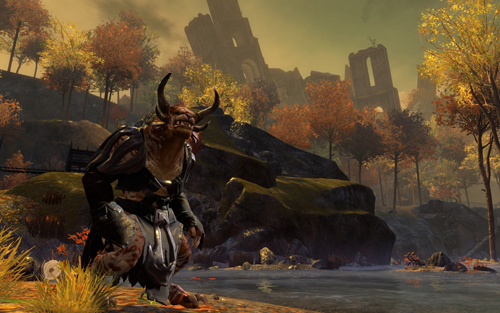
You’re only as strong as your weakest link
By and large Guild Wars 2 has one of the strongest infrastructures of any MMORPG out there. Their launcher is agile, their registration process is a breeze, latency problems are largely nonexistent. The trouble with seeming perfection is that any errors stand out like a sore thumb. One of the largest of these glaring issues comes with the basic grouping systems in the game. MMORPGs are all about social experiences, and we handle these social groupings through guilds and parties. Unfortunately there are some major design flaws with the party and guild systems in the game, which make it incredibly frustrating for a player looking to group with friends.
First of all, Guild Wars 2 has forgone the traditional queuing system for something called “overflow servers.” They split their shards into multiple instances, and allow players to adventure and quest within these instances until the main instance server is available, at which point they are allowed to transfer into the main world and continue their adventure. This system, on the surface, seems great – instead of sitting in a queue for several hours waiting to get into a full server, the player gets to do what they love – playing the game. However, there is no transparency about which overflow server you are sent to, and even worse there is no priority in place to keep party members together when sent to overflow servers. So if you are grouping with a friend, you could spend your entire play session stuck in separate servers, never able to actually see your friend. And consider too that every time you zone in and out of an instanced area (like a city or a personal quest zone) you reenter this overflow system and hit this potential issue all over again.
The solutions are simple, but ArenaNet is choosing to add more servers so that they can hopefully (as they have said) deal with the initial demand for the game by removing the overflow system entirely. However, that doesn’t help the players who are dealing with it now, nor does that deal with the underlying flaws of the system’s design in the first place. Other games have allowed players to know which instance of a shard they are in, and switch between them so they can join their friends. A simple fix such as this would solve the problem, and should be done quickly, considering the problems with overflow also affect guild members and the communication between them.
Overall
One aspect of this game that you haven’t seen mentioned here is its payment structure. Guild Wars 2 is a microtransaction-based game after you purchase the boxed product. This hybrid has worked for ArenaNet before, but in today’s mature world of online gaming, it’s unusual to see a game that bridges both the subscription and the free-to-play models. To many players the lack of a subscription more than justifies any weaknesses they see in the game, because they are so used to forking over their $15.00 to pay a high-quality MMO. However, the difference here is that this isn’t a free-to-play title, this is a AAA game with a microtransaction back end. The players will always be pushed toward microtransaction items in a game like this, as is evidenced by the Digital Deluxe Edition – a version of the game that gives you cool little perks that are only available to you for limited duration. The first taste is always free, as they say under the overpass. I see that much of what the player community is raving about with the lack of subscription fee is really an ignorance of what the game expects them to pay for. Once they begin to understand the paying for convenience items is core to the payment model, I expect a change in perspective.
Personally when I buy a boxed product of $60.00 I expect to get at least 60 hours of gameplay out of it. If I do I consider it a good value. Guild Wars 2 is a beautiful grind fest, and if it weren’t for the tantalizing personal stories I’m not sure I would get 60 hours of gameplay out of the game before I lost interest. Lucky for me, there are the personal stories, and I have five character slots worth of them. I cannot say anything about what endgame may hold for this title, as it’s still too new, but for now it’s enjoyable, innovative as far as rewarding social gameplay is concerned, and that should be enough.
I guess I was expecting more from Guild Wars 2. It promised to be the new leap forward in MMO innovation, and after playing it I realize that it really isn’t. It’s just an MMO with some new ideas on old features, and perhaps that should be enough.
tl;dr - Too long; Didn't read
Beauty incarnate, this game takes a new look at the MMO genre and succeeds in almost every way. Story elements are engaging, quest systems are innovative but not enough to escape the dreaded grind, and poor server design hinders an almost perfect internal harmony.
Aesthetics: 5.0
GamePlay: 4.0
Story: 5.0
Quality: 4.0
Overall Score: 4.5
1 Comments for this post.
You must be signed in to post a comment.

